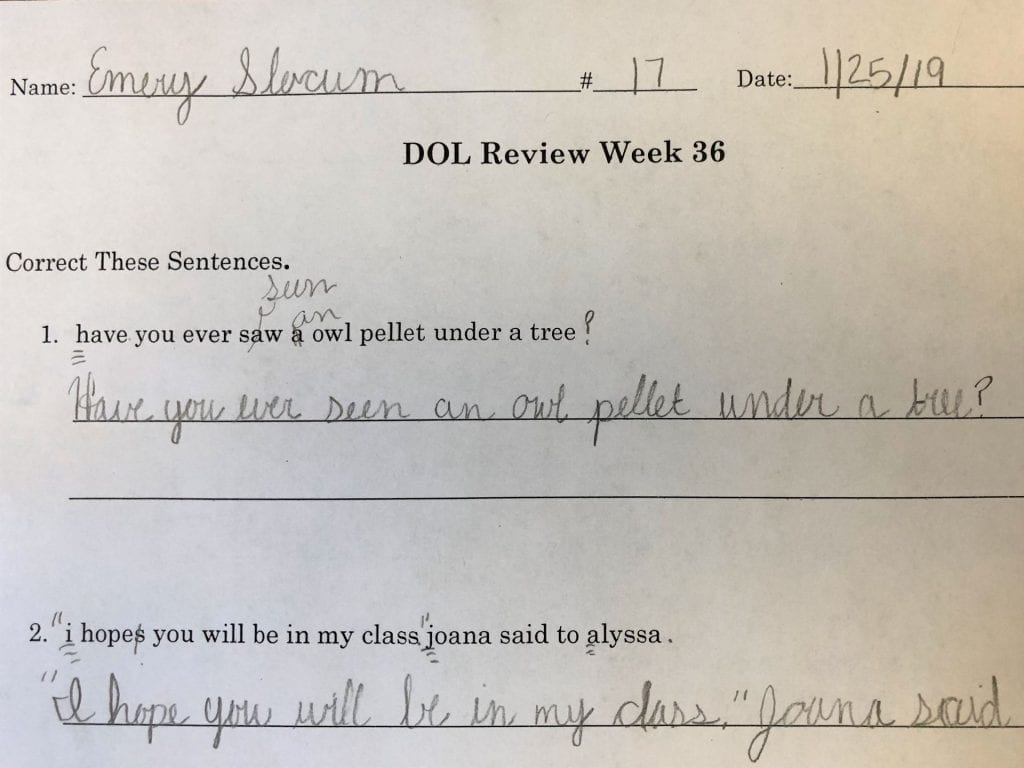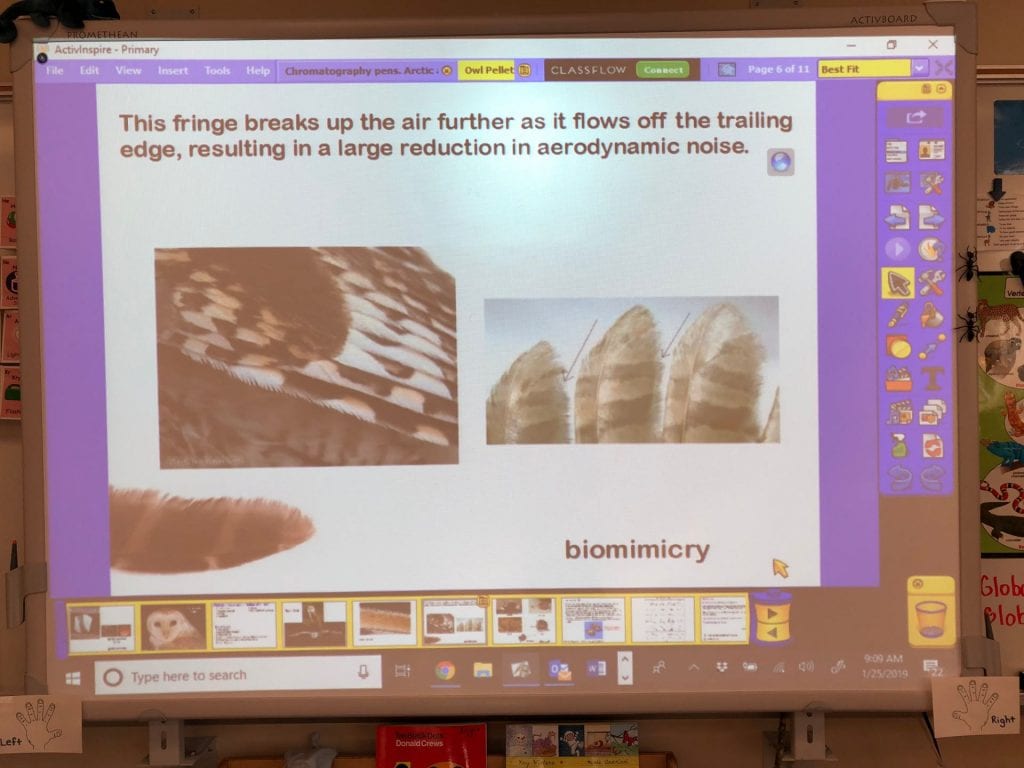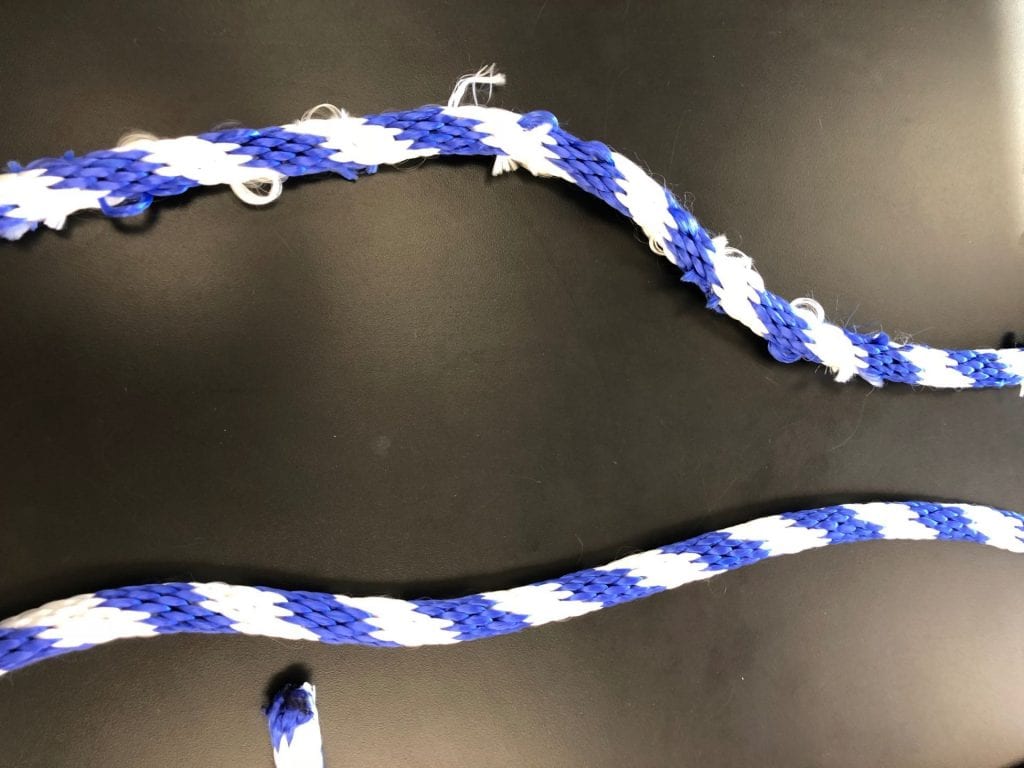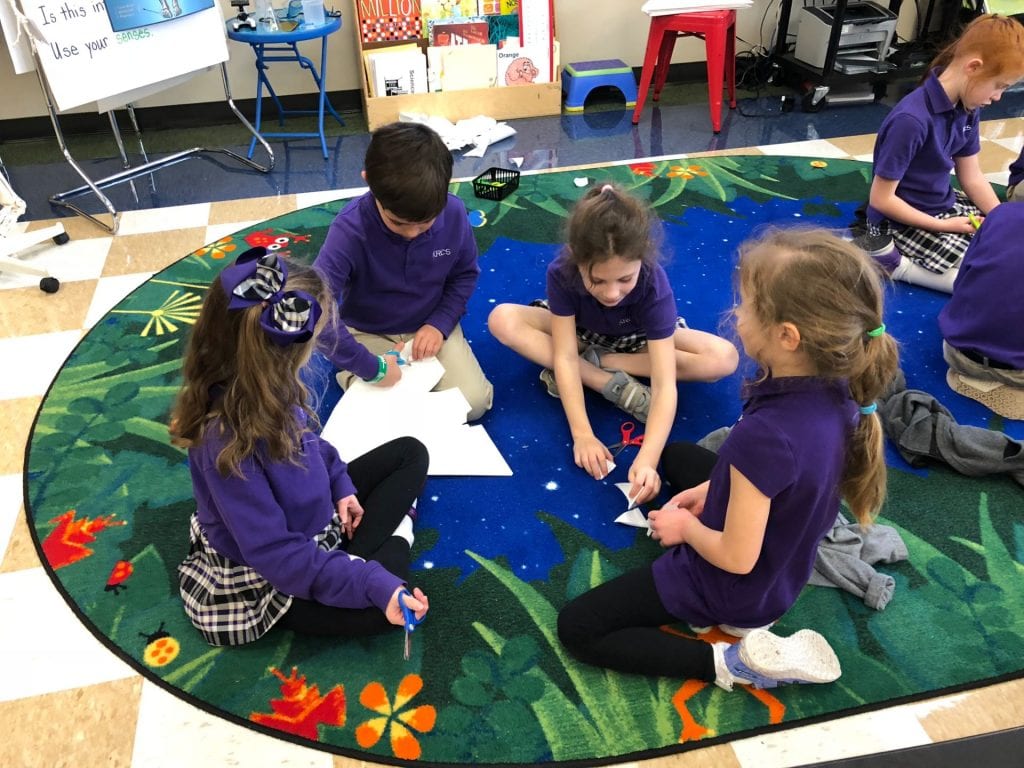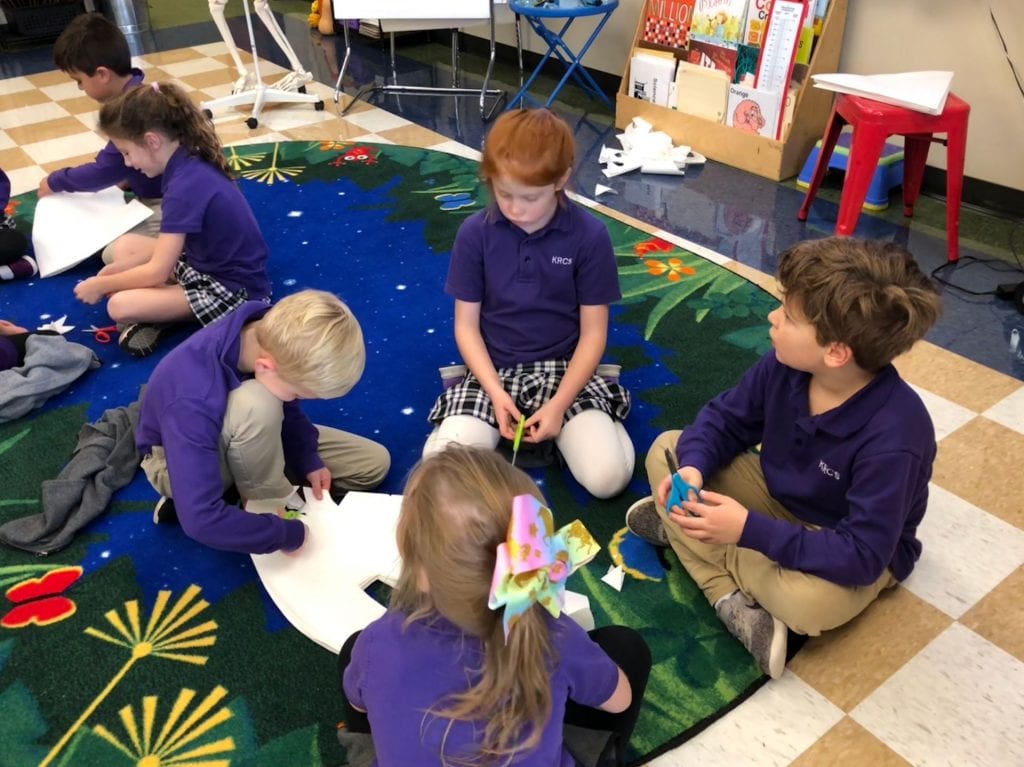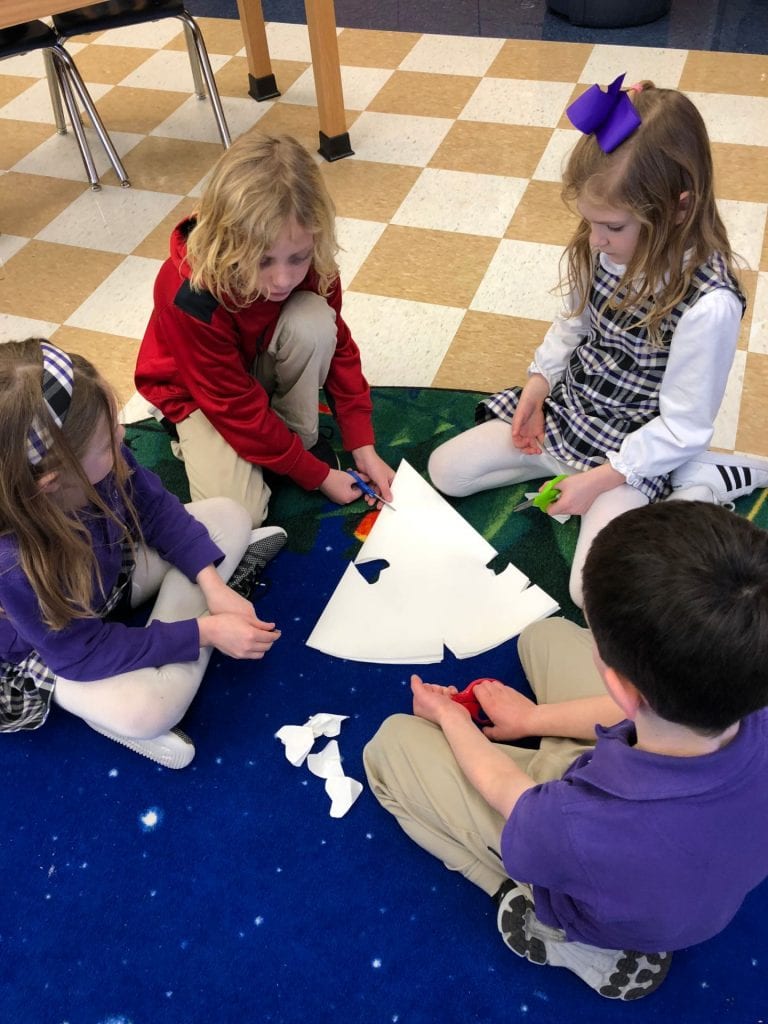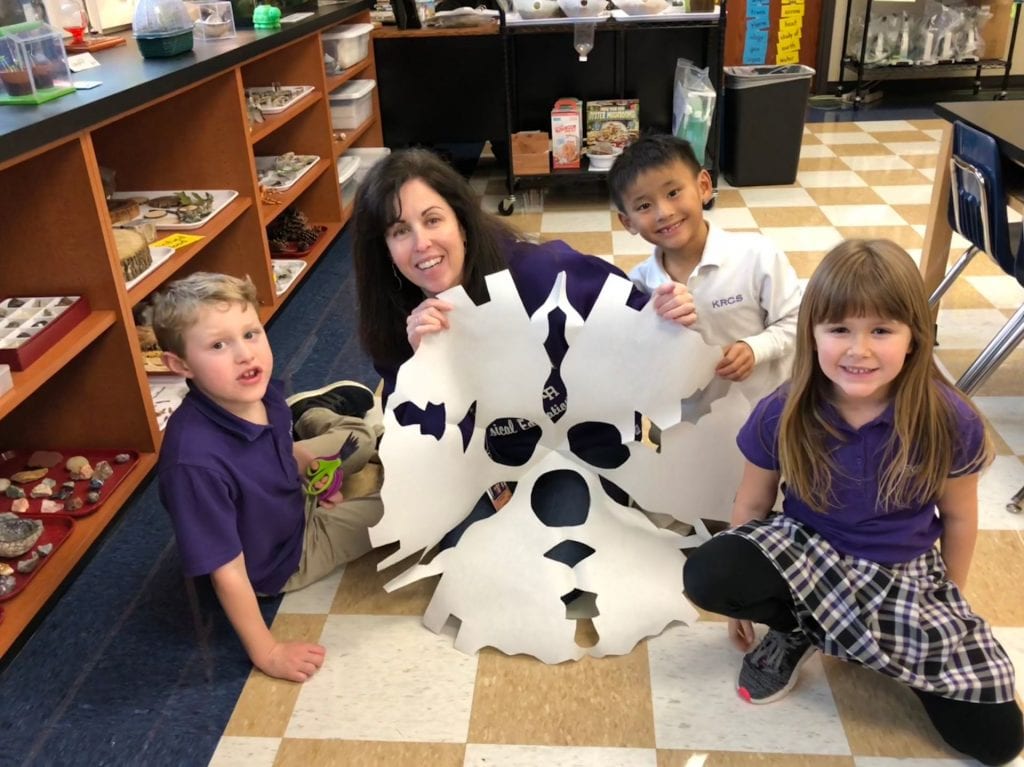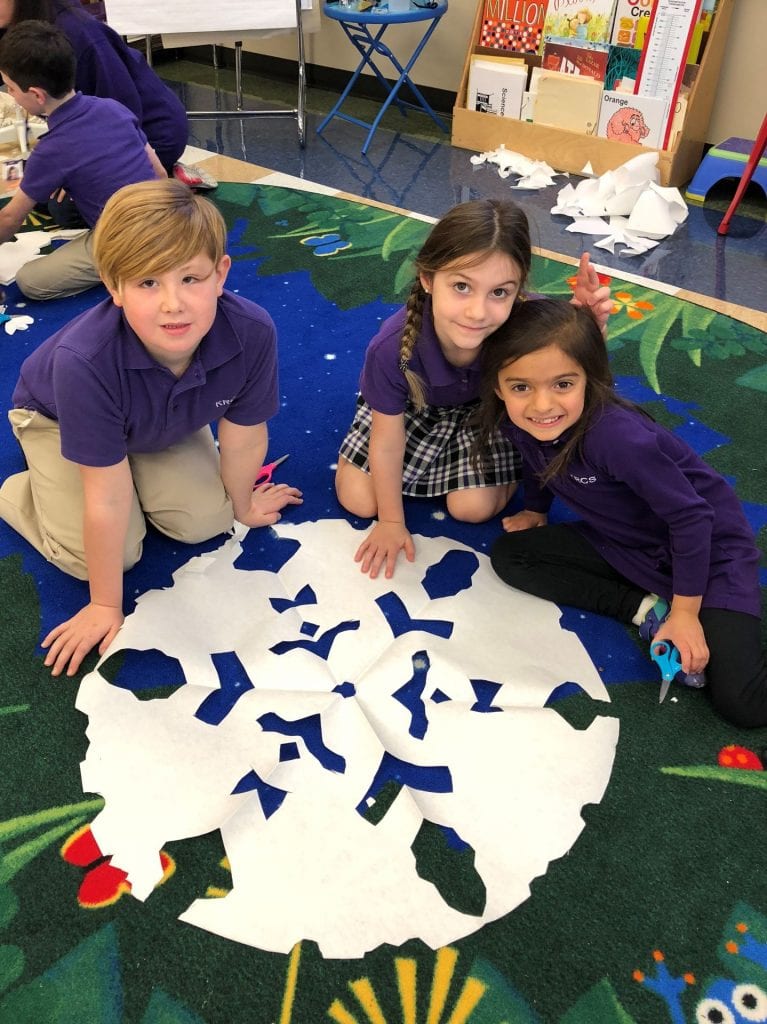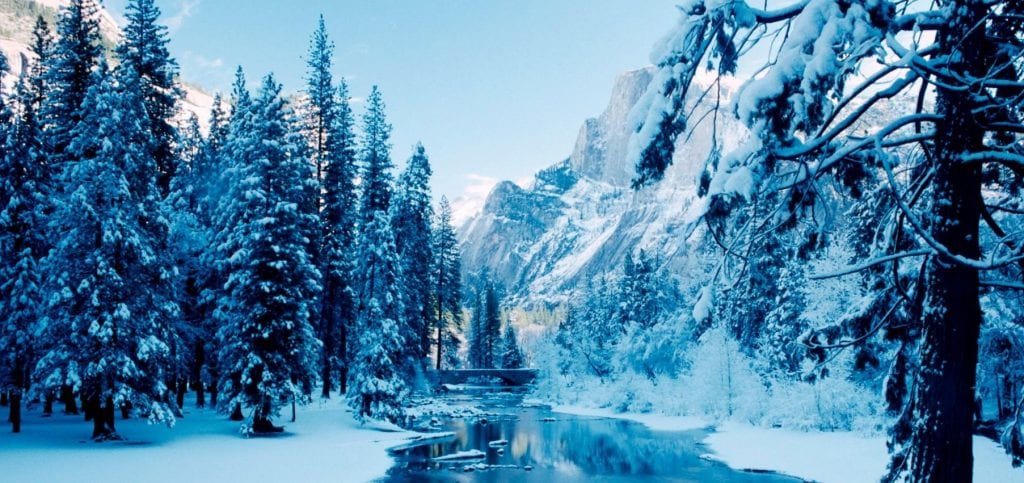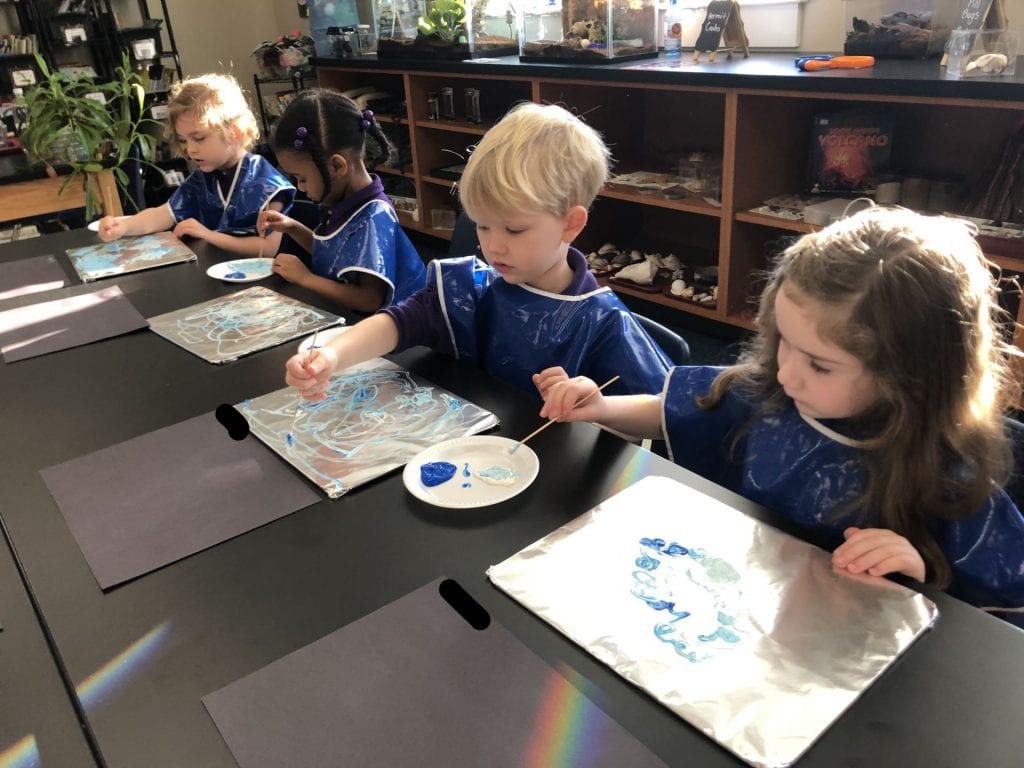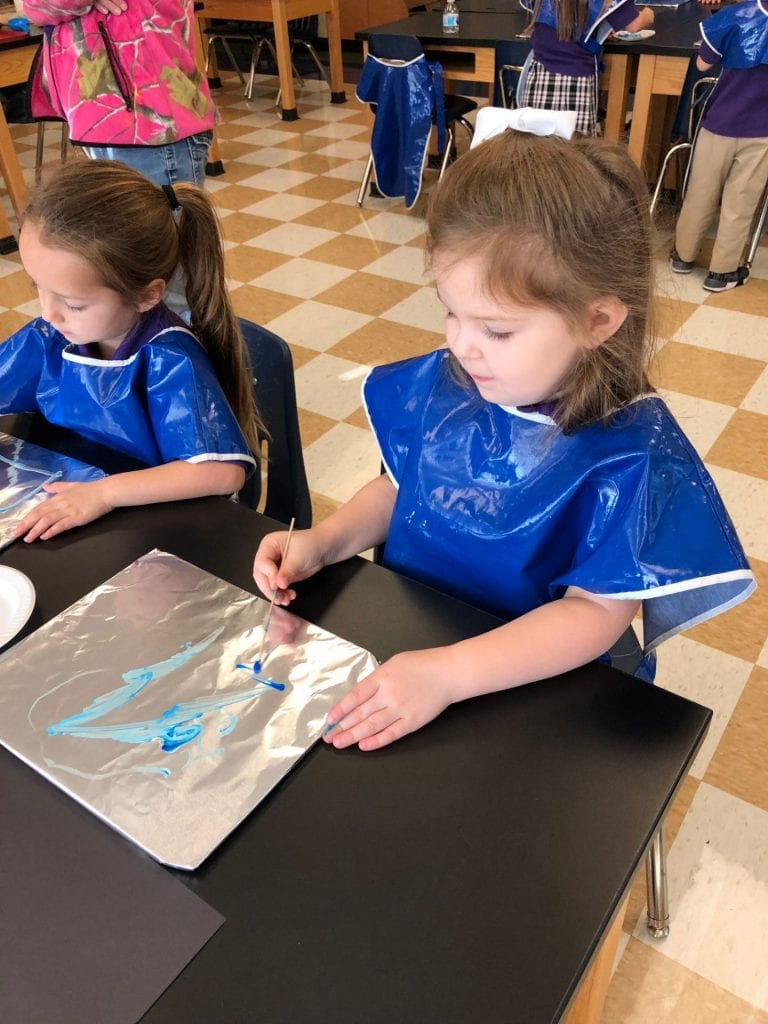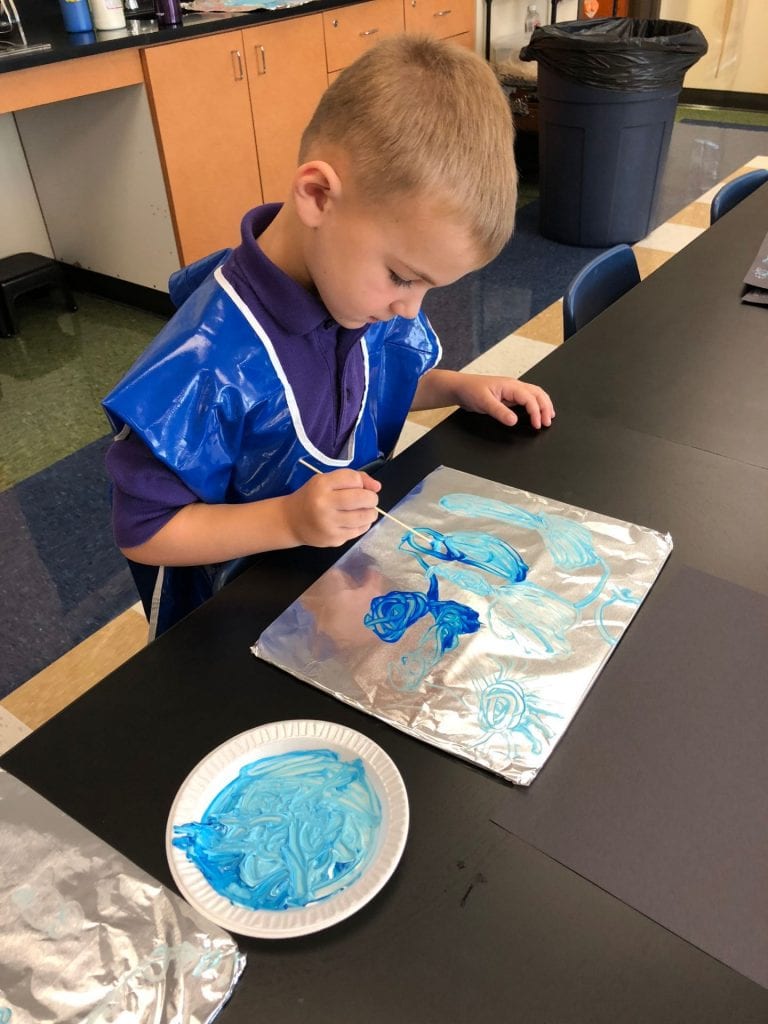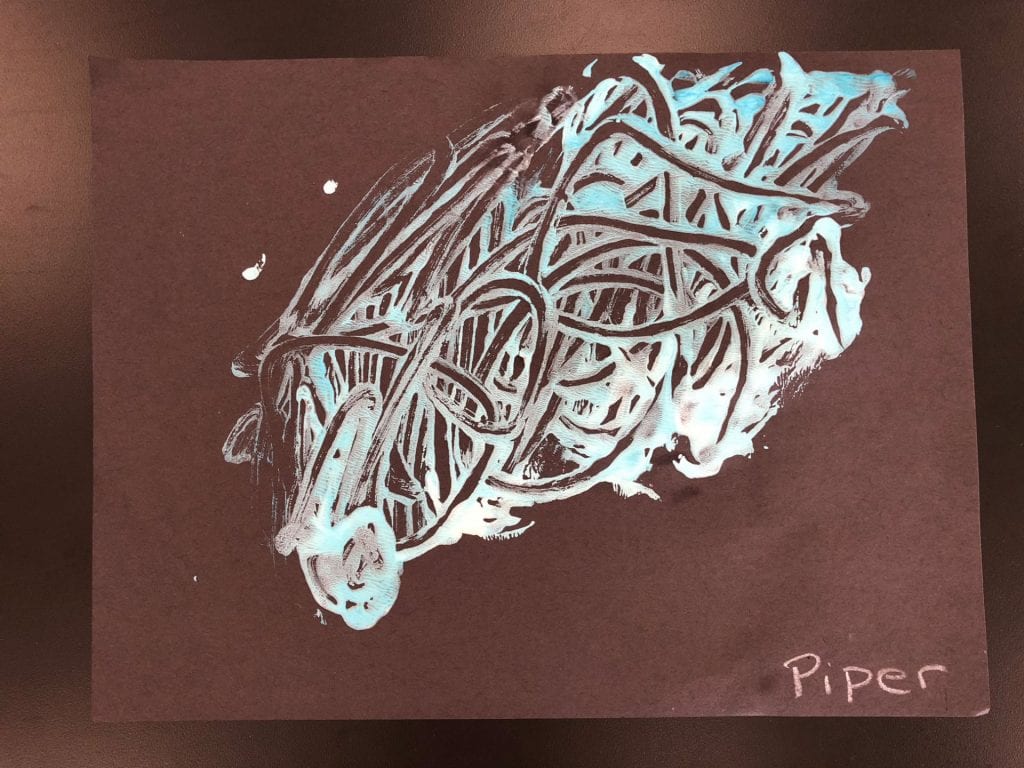Owl Pellets
Third grade biologists dissected sterilized barn owl pellets as part of their unit on vertebrates. Owls eat their prey whole. Since birds don’t have teeth, they can’t chew their food. The owl slowly digests its meal by separating the softer materials, such as meat, from the harder materials, such as bones. It then regurgitates the bones along with indigestible items, like feathers and fur, in a pellet.
We used a bone identification key to identify the bones we found. Animal skeletons found in the pellets included mice, rats, shrew, voles, moles, and birds. We discovered that the animal bones have the same names as those in our bodies, such as femur, scapula, clavicle, rib, skull, and mandible.
Click here to learn how to dissect a pellet.
Click here to learn more about owl pellets.
In their homeroom classes this week, third graders were asked to revise a sentence about an owl pellet. Vocabulary development is an essential component of reading comprehension.
Fourth graders read Poppy by acclaimed Newbery-winning author Avi. The story is an animal adventure about an owl who rules Dimwood Forest. Children understand passages like the one following because they dissect owl pellets in third grade.
“…she glanced at the base of Mr. Ocax’s tree. There lay what appeared to be a mound of pebbles. Gradually a ghastly realization came over her. What she was seeing was a mound of Mr. Ocax’s upchucked pellets, the closely packed and undigested bits of fur and bone from his dinners. The vision made her blood turn cold.”
